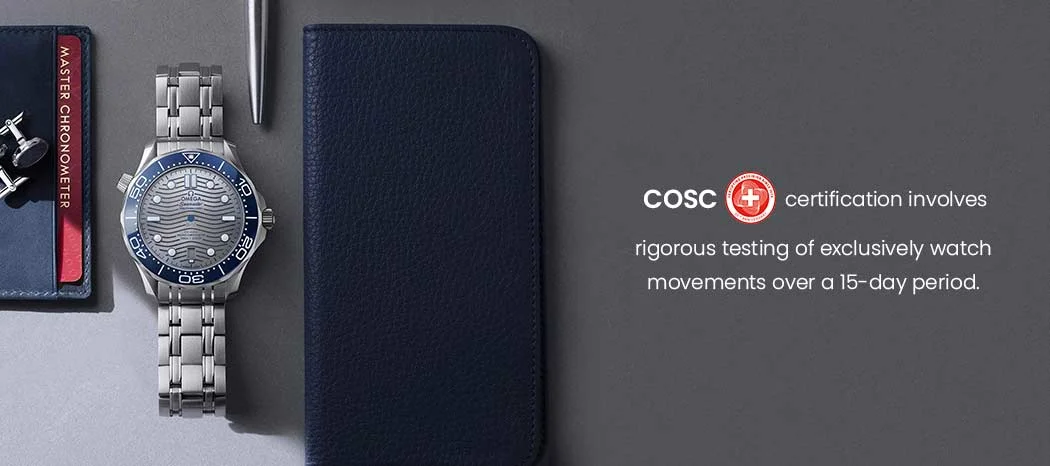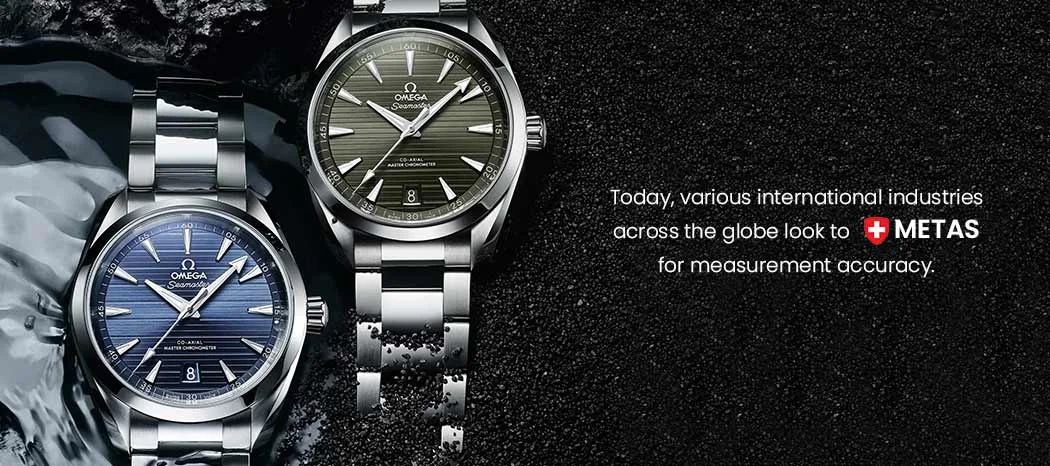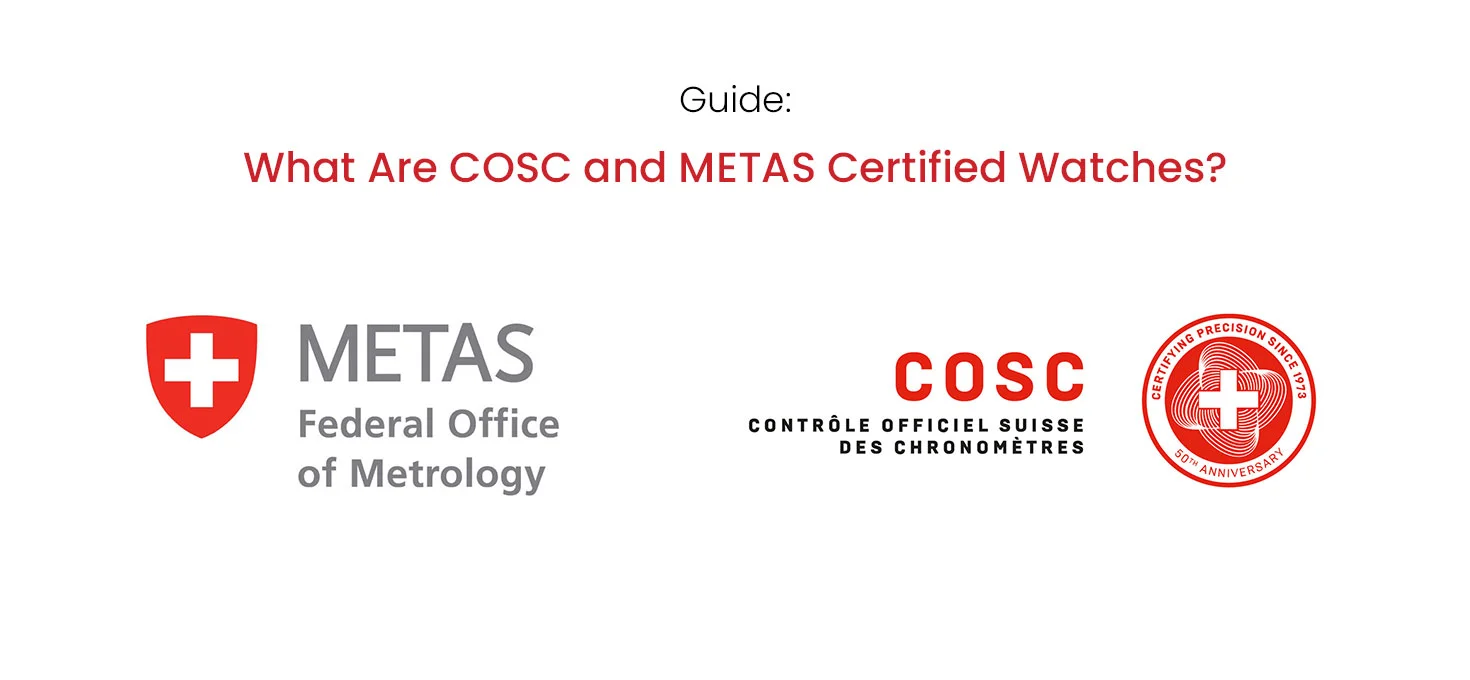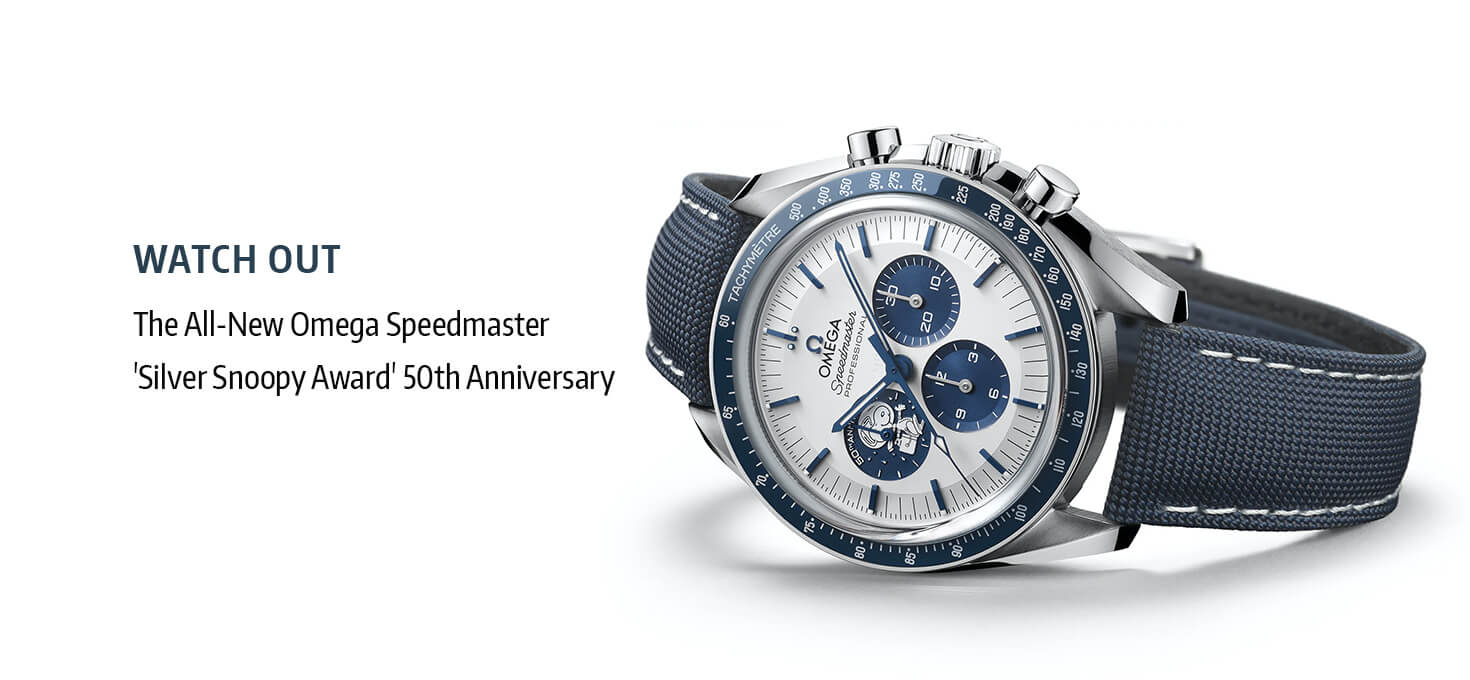If this article finds you, or vice versa, chances are you’re comparing two sporty chronographs but miffed between two terminologies: ‘METAS’ and ‘COSC’ certification. We’re here to give you a crash course on these two crème-de-la-crème chronometry certifications and what they mean.
The term ‘crisis’ commonly accompanies ‘Quartz’ for good reason – they were inexpensive, battery-powered, bulk-manufactured, but most importantly, far more accurate than their mechanical counterparts at the time. This significantly rocked the Swiss mechanical watch industry, as movements were prone to irregularities caused by magnetic fields, gravity, temperature, or force. To regain industry trust, watch/movement certifications were introduced.
Imagine, if you will, a white-coated laboratory in the heart of Switzerland where watch movements undergo a battery of tests for fifteen consecutive days. Tested for shock, magnetism, temperature, and gravity resistance, all in pursuit of quality and reliable mechanical meticulousness. Survive this, and you’ve achieved ‘COSC Certification’ – the first of two hallmarks of sheer horlogerie accuracy, met by merely 6% of all Swiss watches. The second is ‘METAS Certification’, which is more stringent in tests with an even lesser success rate, representing its benchmark of perfection as the true epitome of mechanical timekeeping accuracy. Even though maisons today have internal seals of accuracy, they still submit their movements and watches to these independent testing institutions.
Shedding light on who these precision-obsessed testing bodies are, what goes into their certifications, their differences, and why they matter, here’s a crash course on COSC and METAS Master Chronometer Certifications.
COSC (Contrôle Officiel Suisse des Chronomètres)

Timepieces exist to tell us what time it is, not what it isn’t.
Right from the age-ol’ chronometers that revolutionised maritime navigation to contemporary antimagnetic movements capable of withstanding the electromagnetic onslaught of the modern age – horlogerie’s eternal mission has been precision. This was precisely the emotion that led to the Contrôle Officiel Suisse des Chronomètres (COSC) founding in 1973. At the time, the industry sought a standardised, high-grade accuracy hallmark that could help regain consumer confidence against their Quartz competition.
The COSC certification process involves rigorous testing of exclusively watch movements over a 15-day period. During this time, the movements are evaluated on their daily rate, rate variation, and timekeeping across different positions and temperatures. Watches that pass these tests are engraved with the “Chronometer” designation and revered as bastions of accuracy.
During this time, the movements are subjected to various conditions:
- Tested in five different positions
- Exposed to three different temperatures (46°F, 73°F, and 100°F)
- Must maintain an average daily rate within -4/+6 seconds
- Temperature variations should not affect accuracy by more than 0.6 seconds per day
METAS (Swiss Federal Institute of Metrology)

Founded in 1862, METAS or the Swiss Federal Institute of Metrology is managed by the Swiss Department of Justice and Police. The era’s rapidly expanding local industries sought some form of government attestation for the legality, repeatability, and public trust in trade matters. METAS earned itself a reputation as a ‘Swiss accuracy audit office’.
Simply put, any commodity that required stringent standards of measurement, calibration, and resistance testing in Switzerland was submitted to METAS. Their work and obsession for precision exceed watchmaking, looking into matters of radiation, acoustics, density, electrical energy, traffic, gas, and more. Today, various international industries across the globe look to METAS for measurement accuracy.
Over time, this agency took many names, including the Federal Bureau of Weights and Measures in 1909 and the Swiss Federal Office of Metrology in 1977. Finally, the METAS acronym became its international identity in 2001. Thirteen years later, METAS partnered with OMEGA, upping the ante of watchmaking precision and reliability as they introduced the ‘Master Chronometer’ certification. While OMEGA played a vital role in creating the Master Chronometer name in collaboration with METAS, any watchmaking company is allowed to submit its models for METAS certification.
Finally, let’s talk about METAS’ certification process, which makes COSC’s look ‘cute’. Also, as a prerequisite: watches must be COSC-certified (or meet equivalent ISO 3159:2009 standards) and satisfy “Swiss Made” requirements to qualify for METAS.
Key aspects of METAS certification include:
- 360-degree Watch Testing: While COSC exclusively tests movements, METAS certifies fully assembled watches.
- Magnetic Resistance: Watches must function properly when exposed to 15,000 gauss magnetic fields, equivalent to an MRI machine’s strength.
- Precision Standards: METAS requires a daily precision rate of 0 to +5 seconds for larger movements and 0 to +7 seconds for smaller calibres.
- Extensive Testing Cycles: The certification process involves 10 test cycles, assessing accuracy across various positions, temperatures, power levels, and magnetic fields.
- Power Reserve Verification: The watch’s accuracy is tested at both full power and 33% power reserve.
- Water Resistance Confirmation: METAS includes overpressure tests to verify the watch’s stated water resistance.
- Flexibility in Testing Locations: Any laboratory can perform METAS tests, provided METAS can monitor results and conduct regular audits.
- Transparency: Each certified watch receives a certificate number allowing owners to view specific test results online.
The 10 test cycles of METAS certification:
- Cycles 1-6 focus on magnetic resistance, accuracy in different positions and temperatures, and demagnetisation.
- Cycle 7 verifies the watch’s power reserve.
- Cycles 8-9 measure accuracy at full power and 1/3 power reserve across all six positions.
- Cycle 10 tests water resistance using overpressure tests based on the watch’s rated depth.





Recent Posts
Recent Comments
Archives